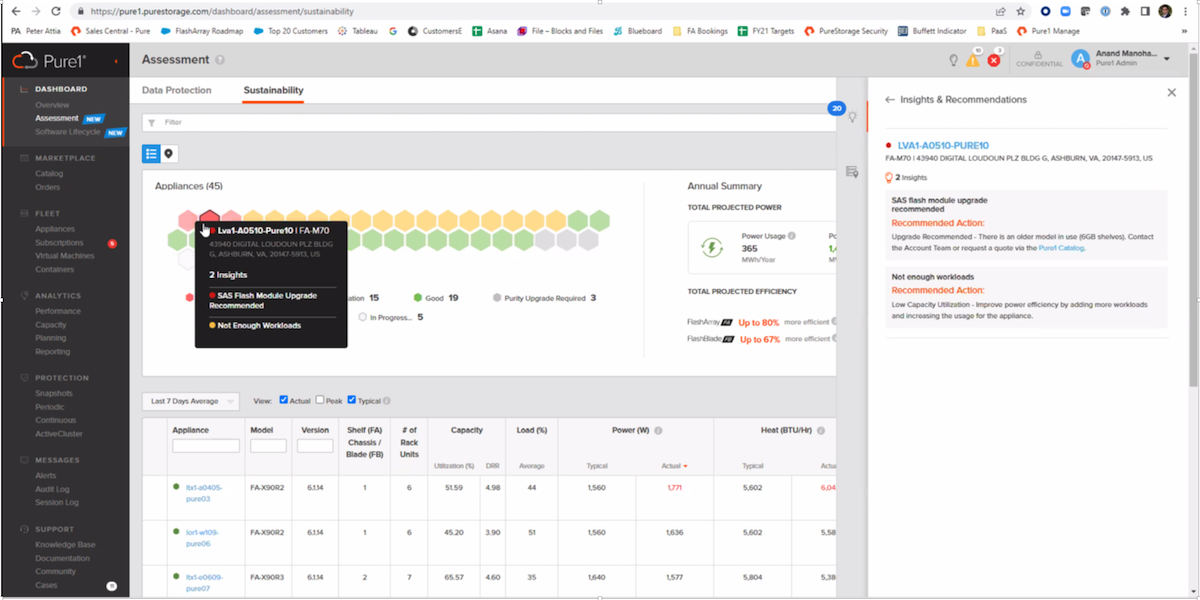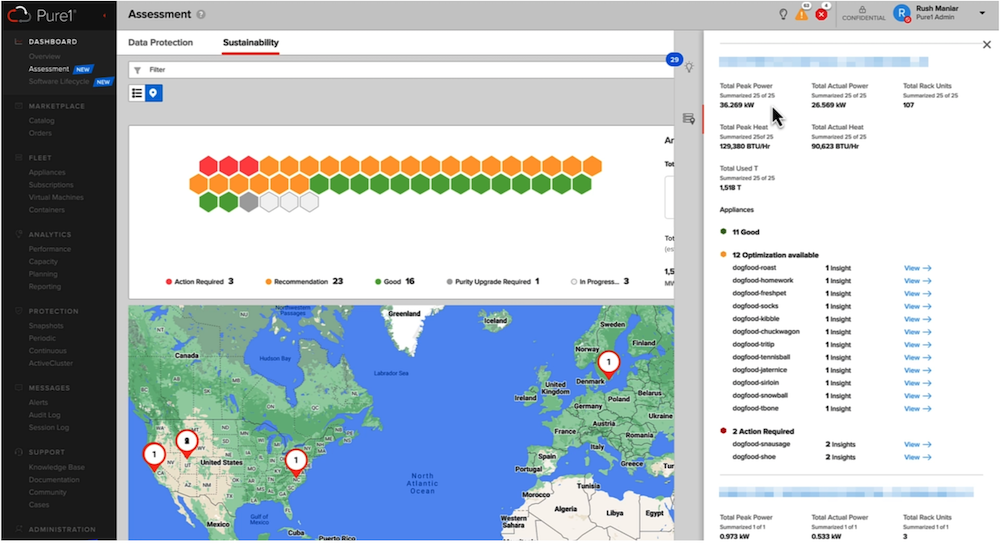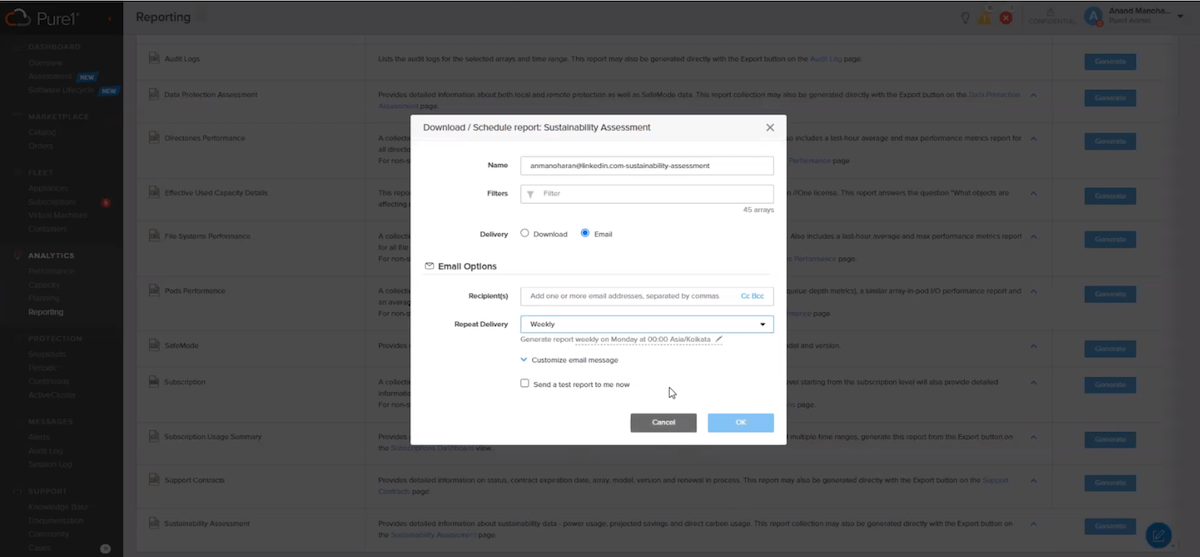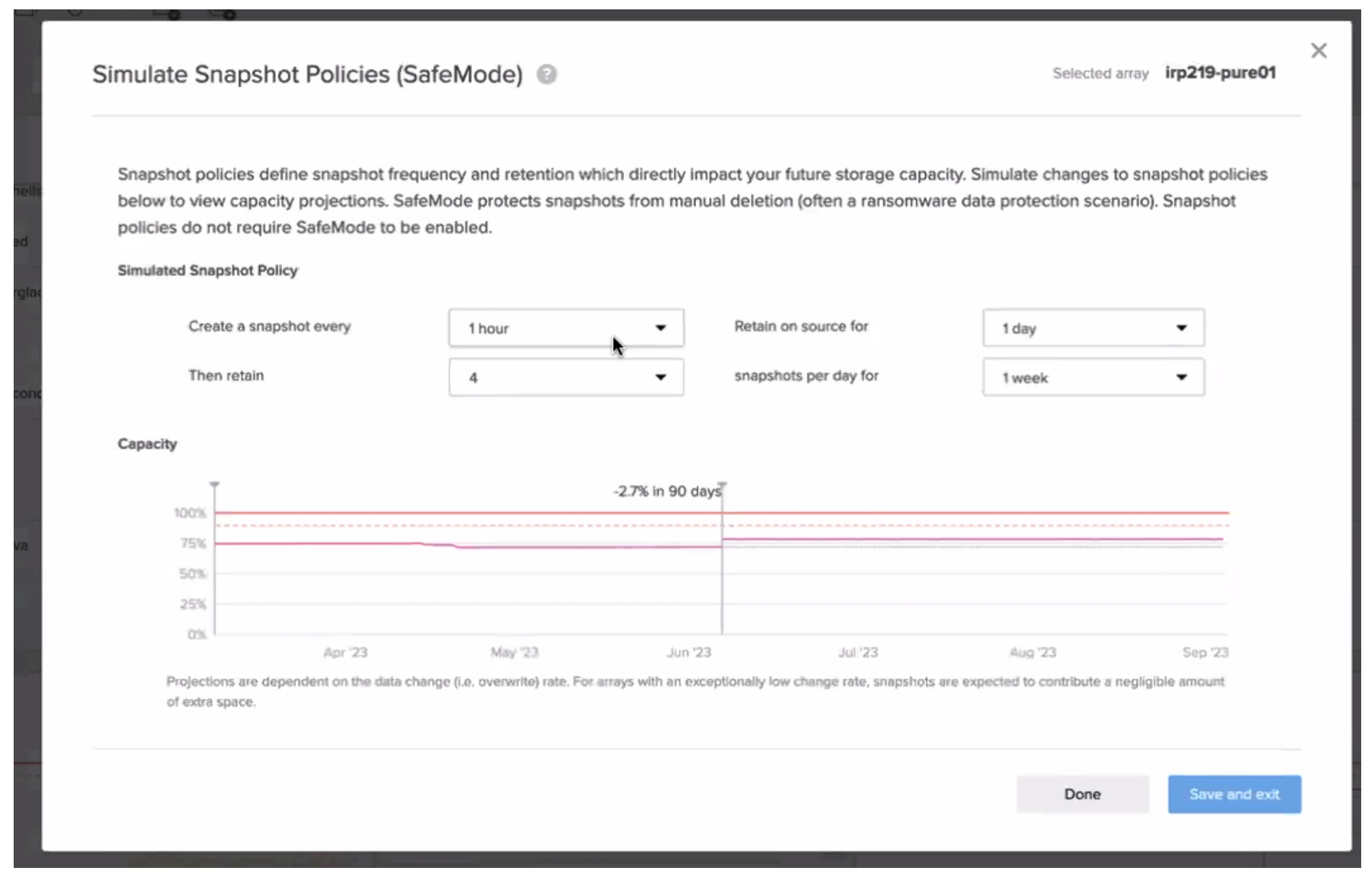increased Focus on Going Green
These days you don’t have to look far to understand the importance and responsibility we all have regarding sustainability to reduce global warming and its impact on our planet. The need for change in sustainability is perhaps even more apparent at present, with world leaders meeting at the COP27 summit in Egypt, and eyes on businesses’ environmental policies across the globe. Europe is currently amid an unprecedented energy crisis with rising costs, resulting in everyone needing a better handle on energy usage. In that background, organisations must prove their green credentials to win new business with clients.
Meeting with Pure Storage
I was lucky enough to meet with Prakash Darji, General Manager of the Digital Experience Group at Pure Storage, to talk about their latest sustainability initiative – the Pure1 Sustainability Assessment. Meeting with Prakash is always interesting as I know the conversation will be more than technology alone. It’ll about the coming together of technology with other business-led factors. I always enjoy these subjects where you can see technology reaching out into the business context. The intersection between business and technology is precisely where the Pure1 Sustainability Assessment comes in.
Introducing the Pure1 Storage Assessment
The Pure1 Sustainability Assessment injects actionable sustainability insights directly into the Pure1 console. This information allows storage administrators and sustainability leaders to get clear insights into energy and carbon usage of the Pure platform across the organisation. With high-level expectations placed on businesses to be more sustainable, this provides critical information that can be used for reporting. The insights allow for changes to be made to improve efficiencies. The Pure1 Sustainability Assessment delivers metrics on three levels –
- Overall energy and carbon usage across the entire organisation
- Consumption at a data center location level
- Consumption at an individual array level
The Pure1 Sustainability Assessment can be quickly accessed from the assessment section of the dashboard menu within the Pure1 console. It initially presents a colour-coded breakdown covering all the appliances. Green indicates appliances with a good sustainability status, yellow indicates those with suggested recommendations, and red indicates appliances that require action. Quickly hovering over the appliances reveal further insights including appliance name, model and location, The Pure1 Sustainability Assessment can be quickly accessed from the assessment section of the dashboard menu within the Pure1 console. It initially presents a colour-coded breakdown covering all the appliances. Green indicates appliances with a good sustainability status, yellow indicates those with suggested recommendations, and red indicates appliances that require action. Quickly hovering over the appliances reveal further insights including appliance name, model and location, as well as the title for any insights. Clicking on the appliance shows further information detailing the insights.

In the image, an appliance has been identified with two insights – a recommendation to upgrade to newer, more efficient hardware, and an underutilisation warning. Based on their needs, users can decide if taking the recommended action would work for their technical and business needs to allow for an improved sustainability score. That is a critical element to consider when reviewing the sustainability score. Changes will need to be made based on insight from multiple parties, similar to the FinOps approach in this article.
Next to the appliance overview, is the annual power usage projection with a power-saving metric. Users also get a tuneable carbon usage meter based on their organisation’s renewable energy utilization.
Focusing on Sustainability at a Data Center Level
Users can get a datacenter focused view by selecting the map view at the top of the page or the datacenter view icon on the right side of the page. The image below shows both views on the screen. The map view shows the geographical location and the number of appliances on a map.
From here, users can drill into the individual locations. On the right is the broader breakdown at the datacenter level. This breakdown gives users key metrics like total peak power and heat, total actual power and heat, alongside the number of rack units in use. This view offers a high-level status of each of the arrays with the ability to drill down further.

Drilling further into the information gives an individual breakdown of each appliance at the bottom of the page. From here, users can see configuration, versioning, load, power and heat metrics, and the efficiency score.
One area worth highlighting is the ability to automate report creation. Usually, those responsible for sustainability within an organisation aren’t the same as those managing the appliances. Automating the report creation allows those in need to have quick access to the required information. This allows the required business and technology discussions to be undertaken where relevant. Reports can be preconfigured and scheduled, and sent via email to the required participants.

Pure Storage has already well-documented its focus and goals regarding the sustainability of its products. For example, a recent ESG report found that Pure Storage products use less power, space, and cooling than existing and competitive solutions. I believe including a proactive tool, such as the Pure1 Sustainability Assessment, puts vital information and insight in the hands of people who can make the changes.
Final Thoughts
This is only the beginning of this tool within the Pure ecosystem. In the future, there’ll be more options allowing users to opt into a carbon offsetting programme or offer intelligent movement based on business and performance needs and renewable energy availability. Whilst these features are not included today, it’s not hard to see such features now being a possibility at some point in the future.
Pure Storage’s FinOps, and AIOps approaches tie neatly into the subject of Sustainability Assessment. From a FinOps perspective, this tool could give further information regarding energy costs and green credentials that could be used within an organization’s FinOps assessments. AIOps could automate the movement where desired, based on energy cost or green energy availability.
The Pure1 Sustainability Assessment and the already green credentials of Pure Storage’s offerings are exactly what some organisations are looking for when making technology selections. Increasingly, organisations need to ensure that technology investments deliver tangible business outcomes, and being able to help prove or improve green credentials will be precisely the areas that will be considered.




